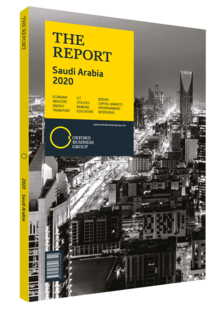Saad bin Abdulaziz Al Khalb, President, Saudi Ports Authority (SPA): Interview

Interview: Saad bin Abdulaziz Al Khalb
How can existing port infrastructure help to position Saudi Arabia as a regional trade hub?
SAAD BIN ABDULAZIZ AL KHALB: The Kingdom’s strategic location connecting the three continents of Europe, Africa and Asia is one of Saudi ports’ strongest assets. The services and initiatives powered by the SPA have improved the shipping sector’s performance and efficiency across the board.
Streamlining procedures and providing flexible and competitive services to global logistics players is at the forefront of our efforts. To this end, the SPA has made strides in management methods, operational performance levels and the development of infrastructure at the core of its operational assets. By providing higher levels of efficiency, modern equipment, large areas for storage, and strong transport and distribution processes, Saudi ports are well equipped to meet shipping’s current and future needs. It is worth mentioning that the Kingdom has the largest ports network in the Middle East, with 10 ports and 240 berths, account for the private King Abdullah Port. Our ports constitute at least 70% of the volume of Saudi non-oil trade, and 13% of world trade passes through the Red Sea.
To what extent can greater privatisation of government-owned ports increase the quality and efficiency of service provision?
AL KHALB: In order to keep pace with economic trends and to continue to develop ports according to the government’s integrated advancement plans, a royal decree was issued in 1997 that assigned the operations contracts at the ports to the private sector. In the years since we have seen the positive outcomes of this decision, which significantly improved operational efficiency and capacity. An example of this is the signing of investment agreements and partnerships that led to an evolution in equipment, machinery and the beneficiary satisfaction rate.
The SPA has taken significant steps towards privatisation and aims to redevelop current contracts to include more flexible and competitive conditions. By increasing private participation in the sector to 70%, we aim to reduce shipping costs and the time containers stay at ports to three days by 2020.
In what ways are Saudi ports equipped to handle a potential long-term rise in non-oil exports?
AL KHALB: Saudi Arabia is considered the top oil exporter in the world, and our country has the largest and most diversified economy in the Middle East. We produce numerous industrial products for export, so maritime in general and ports in particular have received unprecedented attention from the authorities. Indeed, our sector has a key role to play in Vision 2030, the government’s diversification and modernisation strategy.
Saudi ports are central players in the authorities’ efforts to raise the share of non-oil GDP from 16% to 50%. Efficiency in our ports incentivises this expansion, and we have implemented many measures to this end. These include clearing containers within 24 hours and reducing the storage fees exemption at all ports to five instead of 10 days. In October 2019 we introduced trucking management services at King Abdulaziz Port in Dammam on the FASAH trade system, an e-government platform that acts as an integrated data exchange and e-services portal. The platform has been introduced in 30 ports to simplify and ease the transfer of information, as well as reduce lead times, paperwork and costs.
The SPA has worked to facilitate the export of Saudi products. The authority has reduced incoming handling fees at Jubail Commercial Port and implemented an exemption period for demurrage storage fees for these containers to allow exporters to receive them directly from the port. These efforts will help decrease costs by 53% from current levels.
You have reached the limit of premium articles you can view for free.
Choose from the options below to purchase print or digital editions of our Reports. You can also purchase a website subscription giving you unlimited access to all of our Reports online for 12 months.
If you have already purchased this Report or have a website subscription, please login to continue.

